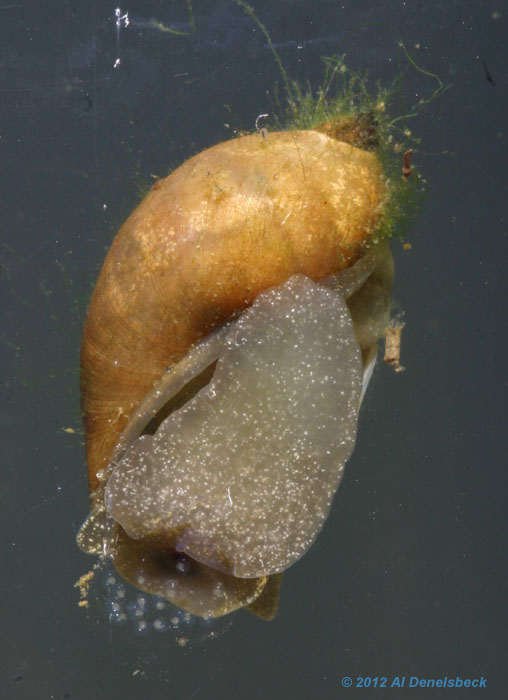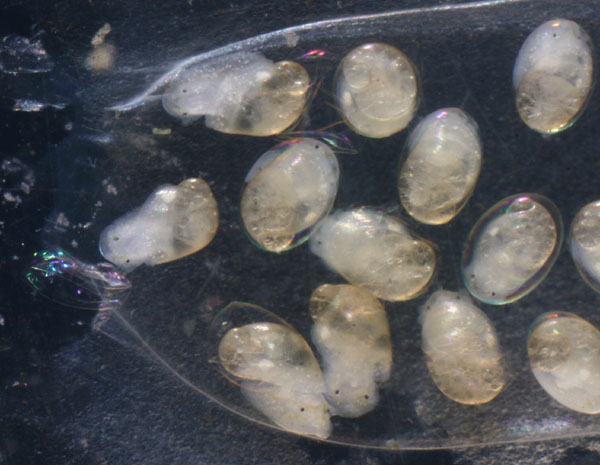[All] Canon 300D, tripod
Vivitar bellows
Metz 40MZ-3i flash off-camera
ISO 100
[Top] Vivitar 135mm 2.8
1/200 second, f22
[Middle & Bottom] Argus 50mm 3.5
1/200 second, f16
|
[All] Canon 300D, tripod |
| A lot to make an omelet | |
 |
|
After leaving Florida and my regular access to a wealth of aquatic life, I began going through withdrawal, and eventually began scouring ponds and streams in central North Carolina for some interesting photo subjects. The variety is nothing like what can be found in a saltwater lagoon, but there were still some interesting subjects to be found, and I now had a better photography rig to use.
The snails in the area are generally small and unremarkable, but they had a wicked tendency to be laying eggs in clear protective sacs all over the aquarium sides. Above, I was lucky enough to catch one in the act, and since this is as slow as you might expect it to be, I was able to arrange the photo rig to my liking and actually see the emergence of each new egg. If you're sharp-eyed, you might have noticed that the eggs are emerging from the front of the snail, and this is typical – snail anatomy departs from the standard layout that we usually expect.
| The eggs themselves are roughly the same size in diameter as a straight pin shaft, seen here alongside a copepod for scale (that is, if you know how big a copepod is, but let's just say they can do some tight laps in a drop of water.) The eggs have barely begun development, and seeing details emerge takes some powerful magnification, so it's not a project to show children the miracle of forming life unless you happen to have lab equipment handy. The challenge for such photography, besides the magnification, is finding the right strength and angle of lighting to produce good results, but since they're not going anywhere, experimentation is much easier. Here the spherical shape of the eggs is expressed by the light reflections from the surfaces, much more visible because the background was kept away from any light source. |  |
Eventually they hatched (it took about a month.) Even as newborns there isn't a whole lot to see. The light angle produced some nice diffraction from the eggshells, making them appear like soap bubbles around the emerging snailings... snailettes... snailies... whatever. Producing this effect was a matter of luck, since it cannot be seen in the viewfinder, but it added a lot to the image.
|
 |